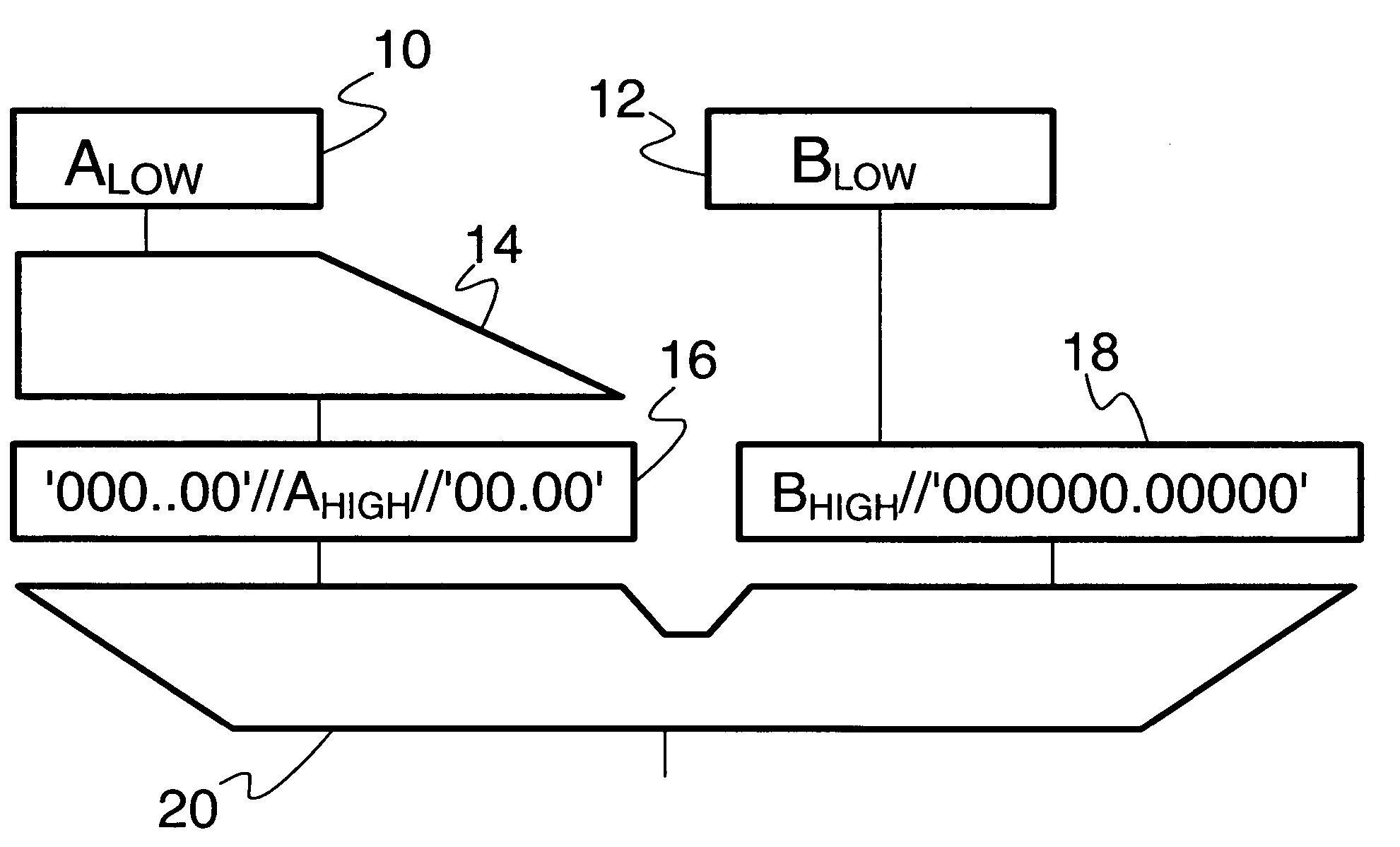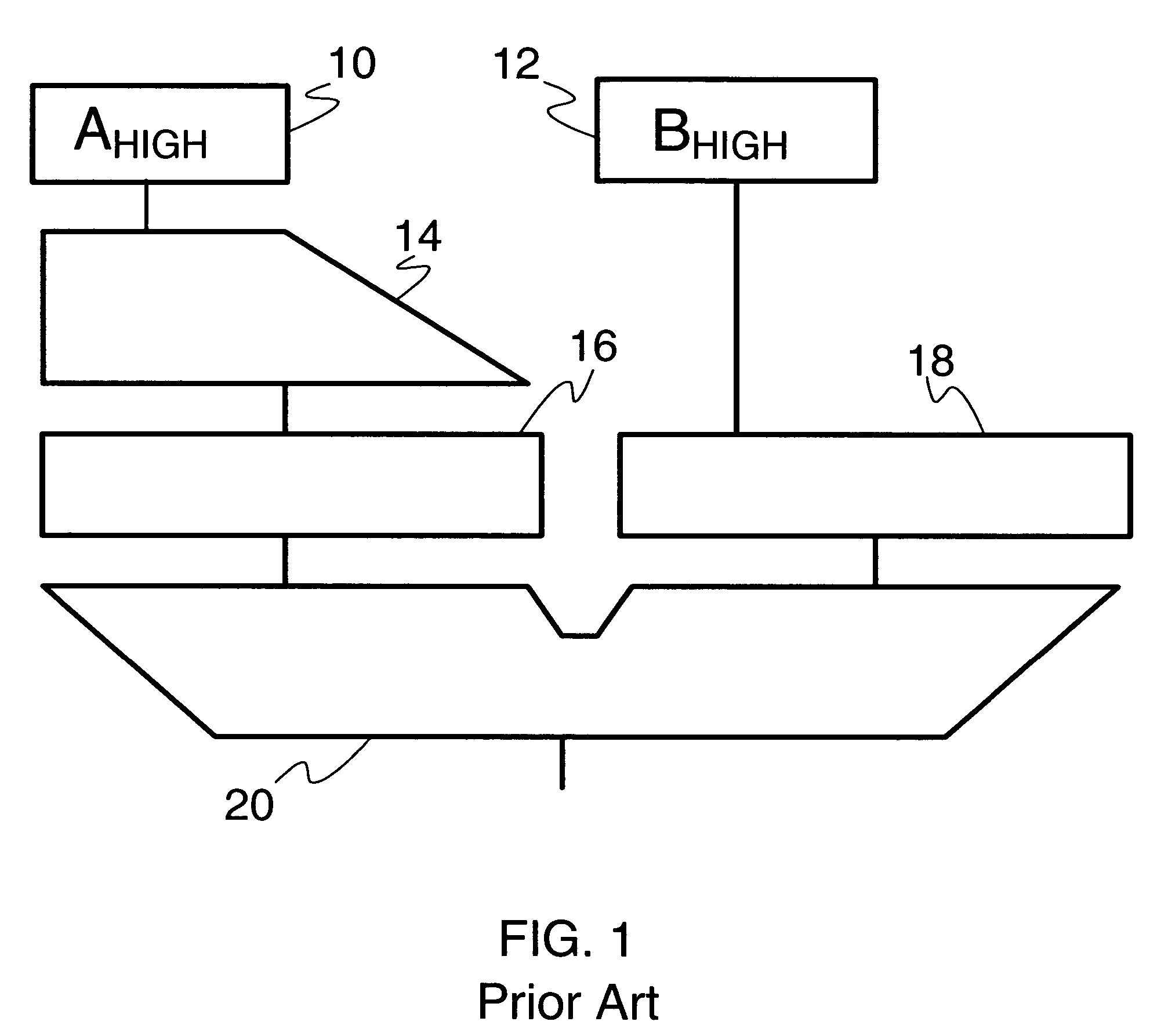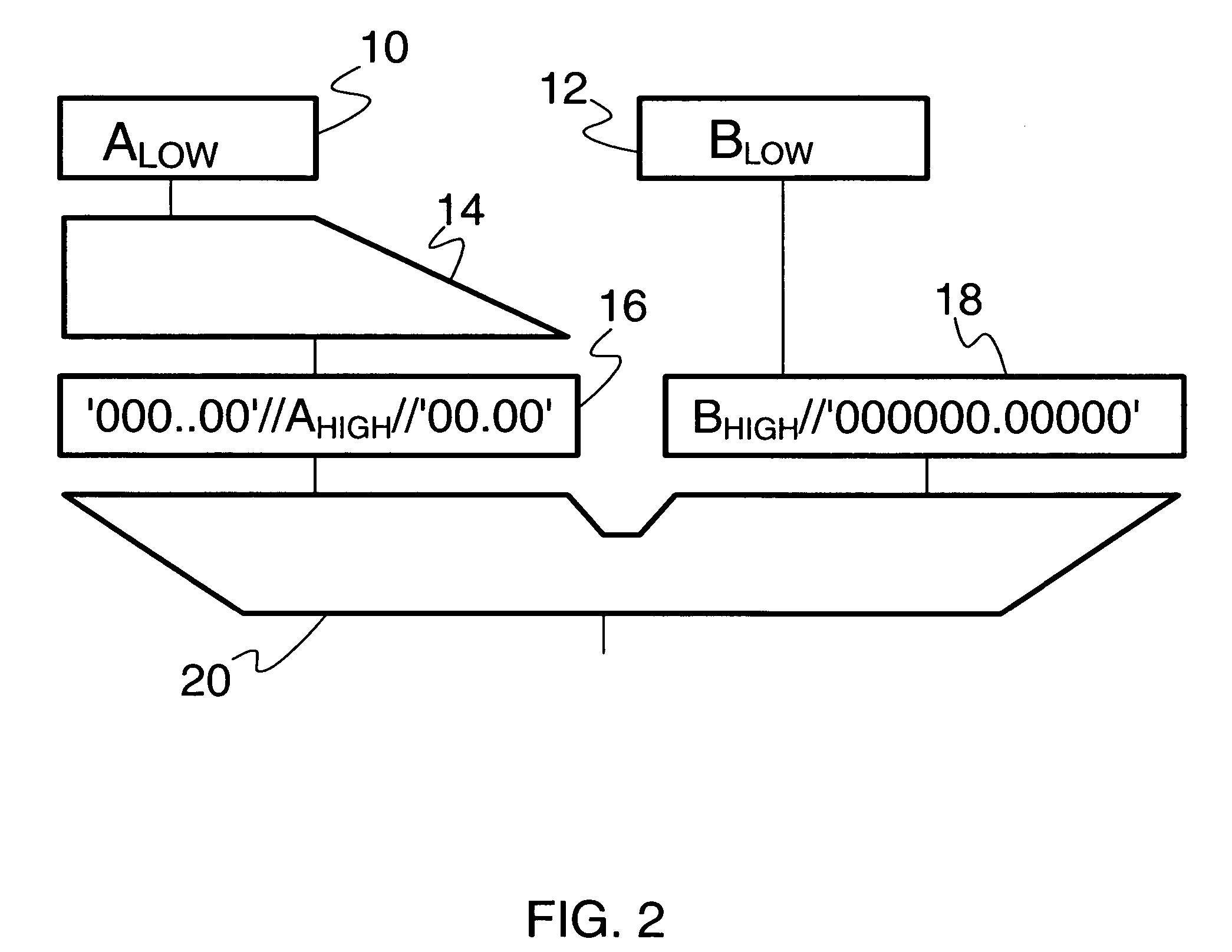Advanced execution of extended floating-point add operations in a narrow dataflow
a floating-point processor and add-subtraction technology, applied in the field of add-subtraction circuits in floating-point processors, can solve the problems of complex control logic and high number of 13 cycles used to perform the above-mentioned suboperations, and achieve the effect of improving the execution of an extended add/subtraction operation
- Summary
- Abstract
- Description
- Claims
- Application Information
AI Technical Summary
Benefits of technology
Problems solved by technology
Method used
Image
Examples
Embodiment Construction
[0060]With general reference to the figures and with special reference now to FIG. 1 the extended floating-point operands A and B are added in a multiply / add unit, of which only the aligner and adder part is depicted including respective input registers in the drawing of FIG. 1.
[0061]A respective setting of registers is denoted in the accompanying drawings by the illustration of a respective operand part within a respective register.
[0062]In particular, the high part of the floating-point number mantissa A is loaded into input register 10 of aligner unit 14, and the high part of floating-point number mantissa B is loaded into input register 12 of a carry register 18. Input register 10 for Ahigh has a length of 56 bit and is connected to the aligner unit 14. It should be noted, that in a preceding step the determination is made that the floating-point number A is less than the floating-point number B, i.e. that A must be aligned according to B.
[0063]Aligner unit 14 is connected to su...
PUM
 Login to View More
Login to View More Abstract
Description
Claims
Application Information
 Login to View More
Login to View More - R&D
- Intellectual Property
- Life Sciences
- Materials
- Tech Scout
- Unparalleled Data Quality
- Higher Quality Content
- 60% Fewer Hallucinations
Browse by: Latest US Patents, China's latest patents, Technical Efficacy Thesaurus, Application Domain, Technology Topic, Popular Technical Reports.
© 2025 PatSnap. All rights reserved.Legal|Privacy policy|Modern Slavery Act Transparency Statement|Sitemap|About US| Contact US: help@patsnap.com



